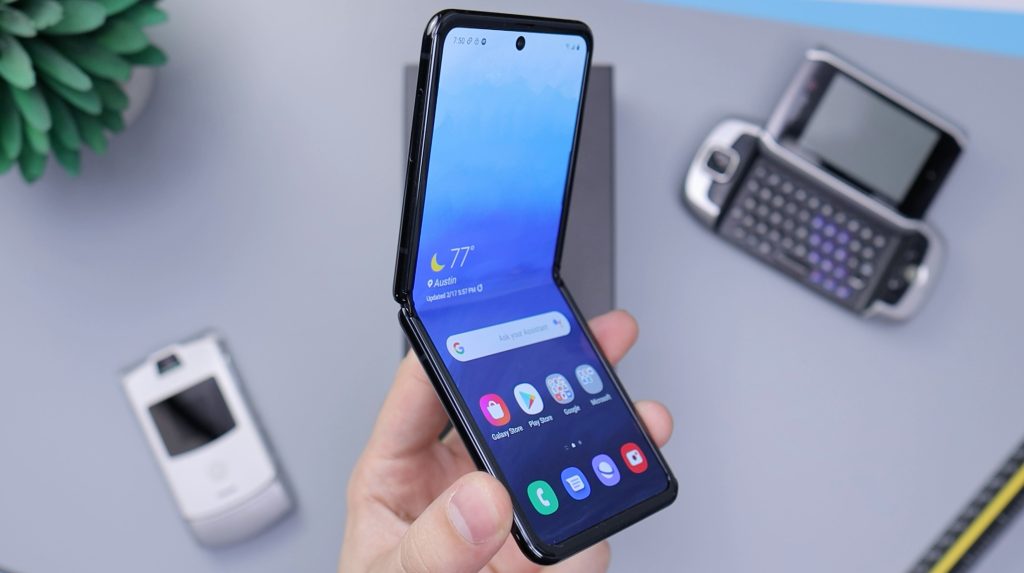As the mobile technology landscape continues to evolve, foldable phone technology has emerged as a revolutionary innovation, capturing the attention of consumers and industry experts alike. This blog post delves into the profound impact of foldable smartphones on the future of mobile technology. By examining the unique features, benefits, and potential challenges associated with these devices, we aim to provide a comprehensive analysis that highlights how foldable phones may reshape the way we interact with our devices and influence the broader tech ecosystem. Join us as we explore the implications of this cutting-edge technology and consider what it means for the future of mobile communication.
The Evolution of Mobile Technology
Historical Context of Smartphones
Smartphones evolved from bulky devices with physical keyboards to sleek touchscreen gadgets. Key milestones include:
- 2007 : iPhone’s touchscreen revolution.
- 2010s : Rise of large screens and bezel-less designs.
- 2020s : Foldables emerged as the next frontier.
Each leap addressed user needs—bigger screens for media, portability for convenience. Foldables aim to merge both.
Introduction of Foldable Smartphones
Foldables debuted with a promise: deliver tablet-like screens in pocket-sized packages. Early models faced skepticism due to fragile hinges and high prices. Today, brands like Samsung, Oppo, and Xiaomi refine the tech, improving durability and affordability.
Advantages of Foldable Smartphones
Enhanced User Experience
Foldables transform how users interact with devices. A larger screen enables:
- Multitasking : Split-screen apps for productivity.
- Media Consumption : Immersive videos and gaming.
- Creative Work : Drawing or editing on a spacious canvas.
Increased Screen Real Estate
A 7–8-inch display rivals small tablets. For example, the Galaxy Z Fold 5’s inner screen offers 8.2 inches of usable space. This bridges the gap between phones and tablets, reducing the need for multiple devices.
Portability and Convenience
When folded, these phones fit easily in pockets or bags. The Motorola Razr 40 Ultra, for instance, folds to the size of a traditional smartphone. This duality appeals to users who value both space and mobility.
Challenges Facing Foldable Phone Technology
Durability and Design Issues
Early foldables struggled with screen creases and hinge failures. While newer models use materials like ultra-thin glass (UTG), concerns remain:
- Screen Lifespan : Repeated folding may cause wear over time.
- Dust Resistance : Hinges can trap debris, affecting performance.
Manufacturers are addressing these issues, but perfection remains elusive.
Market Adoption and Consumer Perception
Many users still view foldables as niche products. A 2023 survey found that 60% of consumers consider them “too experimental.” To boost adoption, brands must prove foldables are practical for everyday use.
Price Point Concerns
Most foldables cost over $1,000, limiting accessibility. For example, the Pixel Fold starts at $1,300. Until prices drop, mainstream appeal will lag behind traditional smartphones.
The Future Landscape of Mobile Technology
Potential Innovations in Foldable Designs
Future foldables may include:
- Rollable Screens : Devices that extend like a scroll (e.g., LG Rollable).
- Flexible Batteries : Power sources that bend without losing efficiency.
- Dual-Fold Models : Phones that fold both vertically and horizontally.
These advancements could redefine device form factors.
Integration with Other Emerging Technologies
Foldables will likely merge with:
- AR/VR : Larger screens enhance augmented reality experiences.
- AI : Smart assistants optimized for multi-window tasks.
- 5G : High-speed connectivity for streaming on expansive displays.
Such integrations will amplify foldables’ utility beyond basic calls and texts.
Impact on App Development and User Interfaces
Developers must adapt apps for foldable screens. Key trends include:
- Responsive Layouts : Apps that adjust seamlessly between folded and unfolded modes.
- Multi-Window Support : Tools for running four apps at once (e.g., Samsung’s Taskbar).
- Gesture Controls : Swipe-and-fold actions for intuitive navigation.
This shift will push the boundaries of mobile software design.
Conclusion
Summary of Findings
Foldable phone technology holds transformative potential. It offers larger screens, portability, and new use cases. Yet challenges like durability, pricing, and consumer trust persist.
Final Thoughts on the Future of Foldable Phones
As tech improves and prices drop, foldables could dominate mobile markets by 2030. Their ability to blend productivity, creativity, and convenience makes them a cornerstone of future mobile innovation.

